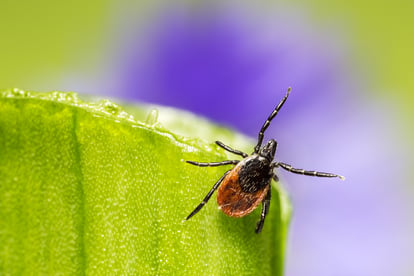Ticks in Massachusetts don't appear out of nowhere. Here's how they find you.
Spring is here, and pests that tend to lay low during winter are on the move. Ticks have been taking less of a break the past couple of winters, but now that the weather is turning around, they will be on a mission to find their next meal. Here's how ticks in Massachusetts find their way to a host.

Unlike some other pests, ticks cannot fly or jump to a host. In fact, they are generally not very agile creatures, so they rely on finely-honed hitchhiking techniques, known as “questing”. The questing tick will find an ideal hunting ground such as tall grass, weeds, or shrubs, climb as high as it can go, stretch its front legs outward, and wait. When an appealing and unsuspecting host passes by, the tick simply climbs aboard and begins looking for a spot to begin its meal.
Perhaps they are not skilled acrobats, but ticks are great planners. They go questing where hosts are frequently active, such as along trails in wooded areas or in dense vegetation surrounding yards. To protect yourself and your pets from hungry ticks, stay in the middle of nature trails, avoid wading through grasses and weeds, and steer clear of leaf litter or shrubbery when spending time outdoors.
While you may not be able to stop ticks from latching on to your clothing, light colored clothes will make them easier to spot. Tuck pants into socks to prevent ticks making contact with skin. Perform regular checks on people and pets and remove attached ticks right away.
Ticks aren't only found in the "wild" - the problem could be closer to home than you'd think. A tick and mosquito program with a reputable company helps to bolster your own tick prevention efforts. At Burgess Pest, our treatment plans start at just $49 per month, and our most popular plan, the P10+MT, includes common household pest prevention with tick and mosquito coverage. Our “quest” is to Protect Your Pad from ticks and dozens of other pests with personalized, affordable plans.


